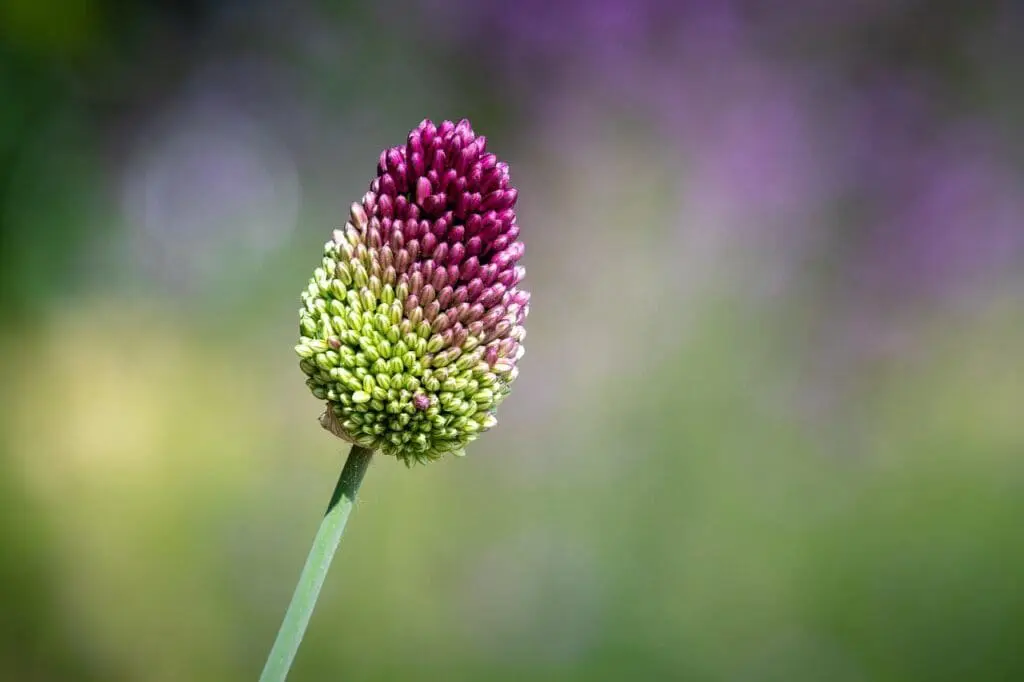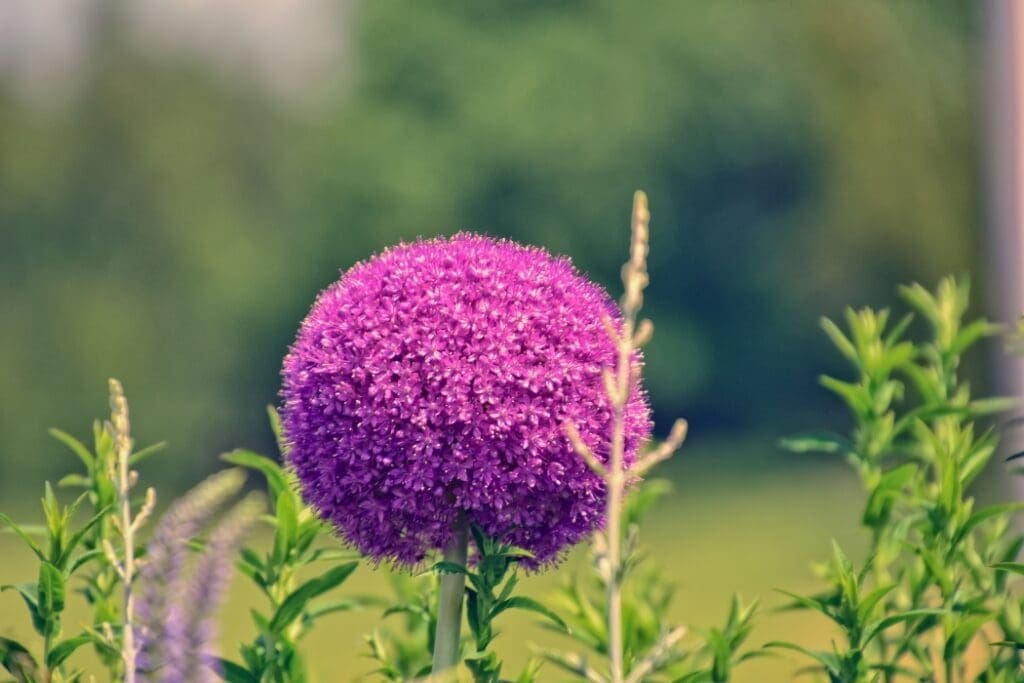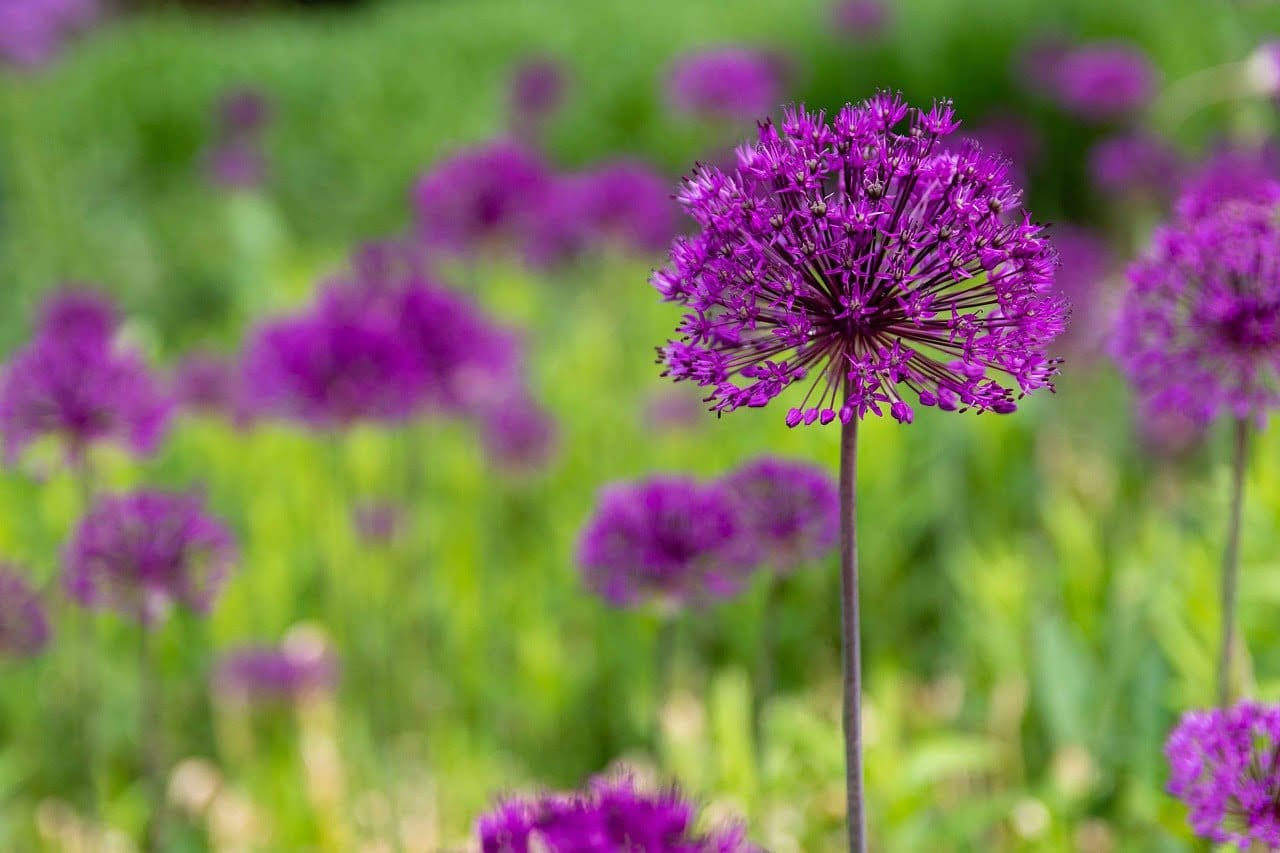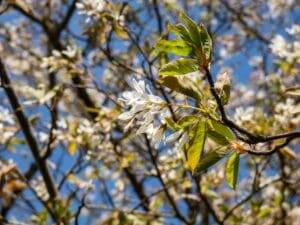The best time to plant allium bulbs in the UK is in the autumn months, September through to early December.
These amazing, round flowers will bring a burst of colour to your garden. We’ll show you how, step by step. Let’s start planting these beauties!
You might also be interested in: Spring Flowering Bulbs
Affiliate Disclaimer: As an Amazon Associate, I earn from qualifying purchases.

How To Plant Alliums
Alliums are not only beautiful but also low-maintenance. However, there are a few key points to remember when adding them to your garden.
- Sunlight: They prefer full sun but can handle some shade.
- Soil: Opt for well-draining soil.
- Wind Protection: Tall varieties benefit from shelter against strong winds.
- Placement: Plant in natural clusters among ornamental grasses, with taller alliums towards the back of borders.
- Depth: Plant bulbs two to three times deeper than their size for stem stability.
- Drainage: Add grit under each bulb to improve drainage and prevent rot.
- Soil Condition: Ensure soil isn’t waterlogged for optimal growth.
Top Tip: If you are planning on planting lots of alliums or any other bulbs we would recommend using a long handled bulb planter such as this one from Kent & Stowe available on amazon view here.
Why Alliums Make a Great Choice for Your Garden


Alliums add perennial magic to your garden, bringing back colorful splashes each spring. As clump-forming perennials, they gradually multiply once established, filling your garden with vibrant colors. They’re especially great for attracting pollinators, charming bees and butterflies in early summer.
In full bloom, their striking appearance adds an architectural element to your garden. Even their seed heads remain fascinating through autumn and winter, continuing to captivate.
Can You Grow Alliums in Pots and Containers?
Alliums can thrive beautifully in pots and containers. Just make sure the container is deep enough and has good free-draining soil, along with sufficient drainage holes.
To prevent waterlogging and rot, mix equal parts of peat-free multipurpose compost and horticultural grit.
When selecting a pot or container, consider the final height of the allium variety you’re planting. This ensures a visually pleasing balance when they bloom magnificently.
Choosing the Right Allium Variety
Wondering which allium bulb variety to choose? We have you covered. Here are a few top picks:
1. Allium Sphaerocephalon (Drumstick Allium)


Often known as the ‘Drumstick Allium,’ Allium sphaerocephalon is a unique and charming garden addition. Unlike the perfect spherical shape of other alliums, this variety boasts of elongated, egg-shaped, burgundy-coloured blooms that mature to a rich red.
Standing about 2 feet tall, it blooms later in the summer, extending the allium season. This variety’s distinctive shape and colour make it a fascinating choice for adding texture and depth to your garden.
Check price and availability on Amazon
2. Allium ‘Purple Sensation’


One of the most popular alliums, ‘Purple Sensation’ is a garden showstopper. Its vibrant, violet-purple globes – which can reach up to 4 inches across – float on slender stalks that stand about 2-3 feet tall. This variety blooms in late spring to early summer, producing a burst of colour that’s a magnet for pollinators. Plant them in groups for a bold, dramatic effect.
Check price and availability on Amazon
3. Allium ‘Globemaster’


Living up to its name, the ‘Globemaster’ is a true giant among alliums. With spherical, lavender-purple flowers that can reach up to 10 inches in diameter, this variety creates an impressive spectacle in the garden. Blooming in early to mid-summer, ‘Globemaster’ stands on sturdy stems that can reach heights of 3-4 feet. It’s also a favourite among bees and butterflies!
Check price and availability on Amazon
4. Allium ‘Mont Blanc’


A striking contrast to the more common purple alliums, ‘Mont Blanc’ offers stunning, snow-white globes that can reach 4 inches across. These blooms appear in late spring to early summer, reaching heights of 2-3 feet. ‘Mont Blanc’ is a delightful choice if you’re seeking to add some bright, light contrast to your garden.
Check price and availability on Amazon
Best Time to Plant Allium Bulbs in the UK?
In the UK, the best time to plant allium bulbs is in the autumn, from September through early December. This period offers the ideal conditions for the bulbs to establish roots before winter sets in.
Planting during this timeframe ensures robust growth in spring and results in the stunning spherical blooms that alliums are known for. As autumn brings falling leaves and a crisp chill, it’s the perfect time to plant your allium bulbs and anticipate a vibrant display in the coming season.
FAQs – How to Grow Alliums
Q: What month do you plant alliums?
In the UK, the ideal time to plant allium bulbs is during the autumn months, from September to early December. This allows them to establish roots before the ground freezes and ensures a vibrant display come late spring and early summer.
Q: Will alliums spread?
Yes, alliums are clump-forming perennials. Once established, they’ll slowly multiply and create natural drifts of colour in your garden. They self-seed quite readily but are generally not invasive.
Q: How far apart should you plant alliums?
As a rule of thumb, plant allium bulbs about two to three times their own depth, and around three bulb widths apart from each other. This gives them enough space to grow without competing for nutrients.
Q: Do you deadhead alliums?
Deadheading alliums—removing spent flowers—isn’t necessary for most varieties as they don’t often set seed. However, some gardeners choose to do so for aesthetic reasons. You can also leave the seed heads intact as they add architectural interest to the garden, especially when covered in frost in winter.
Q: Why are my alliums falling over?
Alliums may fall over due to lack of sunlight, overly wet soil, or overly tall and heavy flower heads. To prevent this, plant them in a spot with plenty of sun, in well-draining soil, and consider staking taller varieties to provide support. Also, planting them among other plants that can provide additional support can help keep your alliums standing tall.







